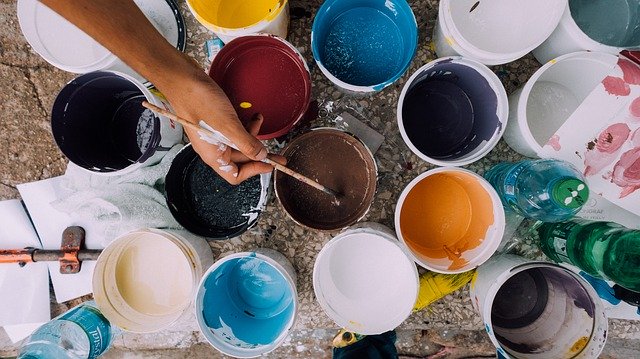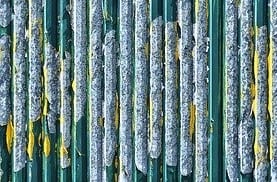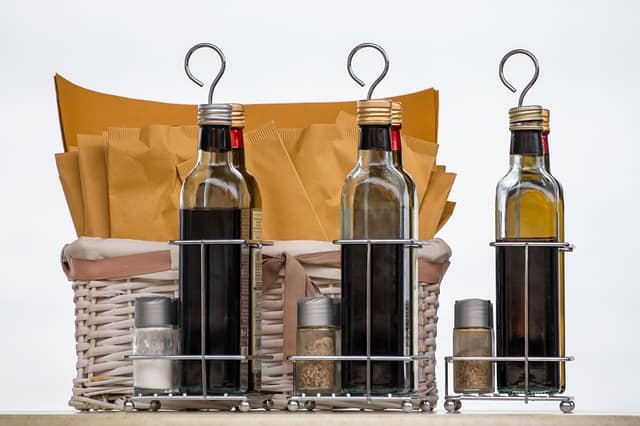How to Paint an Aluminum Boat
Aluminium boats are great for fishing as they’re durable and lightweight. But, sometimes, they may get abused or overused. So, in this post, I’ll take you through how to paint an aluminium boat (step by step). 
A new paint coat on the aluminium boat will give a new life. We’ll help you (affordably) change your abused, neglected, and ugly aluminium boat to look like gel-coated fibreglass ready to go fishing for many years.
Below I’ve outlined the detailed steps of painting an aluminium boat to (hopefully) make your boat-painting project much more straightforward. Luckily, with the correct formula, you won’t need professional shipwright or expert painters.
To paint your aluminium boat Sand off the boat surface, scrub and pressure-wash the aluminium off contaminants and dust, apply the primer, paint about two paint coats, apply a clear coat once the coats are cured, and finally apply the anti-fouling paint.
Details: How to Paint an Aluminum Boat
The market has a range of painting products, but some aren’t quality of they are expensive. I’ve compiled a list of quality and affordable tools and materials you’ll require for the Boat paint Job.
- Electric power drill
- Clean rags
- Respirator and Face mask
- Aluminium boat paint – automotive acrylic spray paint
- Eye & ear protection
- Low-odor Mineral Spirits
- Bristle or foam brushes (2 to 3 inches) and HVLP sprayer
- Wire wheel
- Drop cloths
- Craft or butcher masking paper
- Metal or Plastic scraper
- UV-protective clear coat (2 cans)
- 80 or 40-grit sandpaper
- Fine steel wool
- Aluminium self-etching primer (4 cans for bare aluminium)
- Citristrip Stripping Gel (1 to 2 quarts)
- Plastic bags or plastic drop cloth
- Safety Glasses (see the safety goggles) and protective gloves (1.5 boxes)
Step #1: Prepare an Appropriate Painting Spot
First off, preparing the aluminium boat for the paint job is a critical step – a clean boat will be much easier to paint. But you must undertake the process in an appropriate spot.
- Go for a spot or location (such as a garage) where the harsh weather won’t derail your work or deteriorate the paint job’s quality. Paint the boat during warmer temperatures (winter may make the painting job damper).
- Getting the aluminium boat on an elevated position will make the pint job easier. So, place your aluminium boat on the trailer for ease of painting. You may also get two sawhorses to effectively support the vessel (boat’s inside to face upwards).
- Spread some layers of tough paper or large plastic under the boat (and trailer) to paint, and other painting materials won’t damage the floor. But, finally, remove the acrylic paint from the garage Concrete.
Gear up!
I have to repeat that; safety is paramount while you’re paining the aluminium boat – just like painting a fibreglass boat. So, suit up to protect your lungs from metal bristles and aluminium dust.
Thus, put on your respirator or face mask, ear and eye protection, and protective gloves before you begin working on the aluminium boat.
See Also: Quality Paints for Fiberglass Boats
Step #2: Prepare your Boat
First, inspect the boat’s functionality and structurally soundness. Check for any notable cracks and corrosion – these may signify the need to change the transom. Replace rusted rivets and bolts before using the new paint coat.
On surface prep, ensure that the vessel surface is grease-free and dry – free of foreign matter, including dirt and wax. Use power brushing and sanding to remove gloss area or loose paint.
Use a dampened cloth with some paint thinner to clean the dust and leave it to dry. Acetone, grease, or wax removers will also work well. Next, sand the boat surface using an 80 to 100 grit sandpaper.
Also, examine the strakes a keel for tiny holes that could lead to leakage. Repair the holes, if any, using JB Weld. You can also reinforce any parts over the water-line like the keel, using a Flex tape.
Optional Step: Apply Paint stripper.
Applying the paint stripper (Citrus trip) will help you change the paint on the aluminium bat to a new paint type. The stripper allows easy and effective removal of old paint from the aluminium boat.
The paint stripper generates a delicious orange smell (no fumes). So, pour the stripper gel into a container and use a bristle brush to apply it on the boat.
Now, its time to apply the paint stripper on various boat sections on its hull. Use some drop cloth or plastic to cover this gel – and finally tape the area.
Covering and taping the sections will hinder the quick drying of the stripper (2 to 3 hours are enough). The chemical solution will readily break down the paint bonds leaving the aluminium boat bare.
Next, you’ll require removing any other paint layers remaining on the boat using a wire wheel. Have an electric drill with your wire wheel attached – removing stubborn paint.
Sand the Boat
Now its time to sand the aluminium boat. Remember to sand any carpet sitting inside your boat off the glue that could otherwise hinder the painting process – prevents effective pain adherence.
Inside the aluminium boat that’s painted, get 80-grit sandpaper to scuff the aluminium. But for aluminium that’s bare, you’ll only use 40-grit sandpaper.
Get your paint sander or scraper to remove paint on a location that may lead to new paint peeling. Further, use a brush with soft bristles to help eliminate the debris.
For the sanding process, you may also use sandpaper or an electric sander. Further, ensure to begin sanding on the inside before you more to the boat exterior.
Clean the Aluminum Boat ( soap + water)
Next, clean your aluminium boat thoroughly. Use soapy water in a container such as a bucket and scrub it thoroughly using a scrub brush.
This process will help you eliminate all debris that may have remained from sanding. I would recommend you also employ a hose spray nozzle for rinsing the boat clean.
As noted earlier, lay down plastic or paper as preparation for the area around the boat. This is to prevent damaging the paint and switch on an electric fan to allow great ventilation.
The sanding process did leave many dust and residues, and thus the washing process will help remove them. Thus, you’ll also require to pressure wash the boat’s interior and exterior.
You can also sip some brush with hard bristles in the soapy water solution and scrub the dirt and debris that remaining from the sanding process.
Finally, keenly rise the boat using a high-pressure hose – but air drying is the best. Allow the boat to dry fully awaiting painting or priming. But you may dry the boat manually using a dry towel.
Step #3: Apply the Primer (Optional Step)
Most aluminium boat owners avoid priming their vessels before painting. But priming will enhance paint adhesion while also protecting the boat surface.
Primer application is an optional step when you’re paining the aluminium boat. But if I am applying Durabak, get an oil-based self-etching primer that’ll work well with the aluminium boat.
Mixing the primer (1 gallon) and a paint thinner (1 pint), you’ll effectively accomplish the task even on the small boat cracks. Get your paint sprayer, roller, or brush to get an even paint coating.
So, spay the primer on one side of the boat, leave it for a few hours to dry before turning the boat, and repeating the process on the other side. Now, leave the primer to dry.
Ensure that the primer is fitting with Polyurethane such a Metcote or Zinc Chromate. Use non-skid paint as it’ll allow the aluminium inside of the boat to be non-skid.
Apply your chosen primer, ensure to apply it into the interior boat section evenly (thinly) and it must sip into the corners and cracks. Application options are paintbrush, sprayers, or get a roller.
Give the primer a few hours to dry before beginning the exterior priming. Repeat the priming process on the exterior but ensure the primer lays evenly and thinly.
Leave the primer overnight or up to 12 hours to dry, and this will help prevent the rusting of the large metal object.
Step #3: Paint the Aluminum Boat
So, this is the final step in the painting process, and thus we must give it total attention. While as it, get yourself a quality water-resistant aluminium boat paint.
First, use either a roller, paintbrush or sprayer to paint the inner side of your boat. Leave the surfaces to dry for roughly 12 hours (check paint directions) and continue and paint the boat exterior.
As a precaution, ensure to use even painting strokes while you’re working on the boat’s exterior. Allow the 1st paint to dry before applying the 2nd coat.
Finally, let the boat paint dry for over 12 hours (or overnight) and come back to add a clear coat to the exterior part of your boat still using a paintbrush or roller (use even and thin strokes).
- For corners and other difficult areas to reach,m you’ll require to use a brush.
The clear coat protects the boat from scratches and various environmental elements.
See Also: What’s the best oil-based primer?
Conclusion
Don’t let the “cheap” or old aluminium boat stay with the un-attractive dull-grey appearance.
But new models may have charred its baked-on enamel paint. So, there it is, I’ve outlined how to make your baby boat look better.





